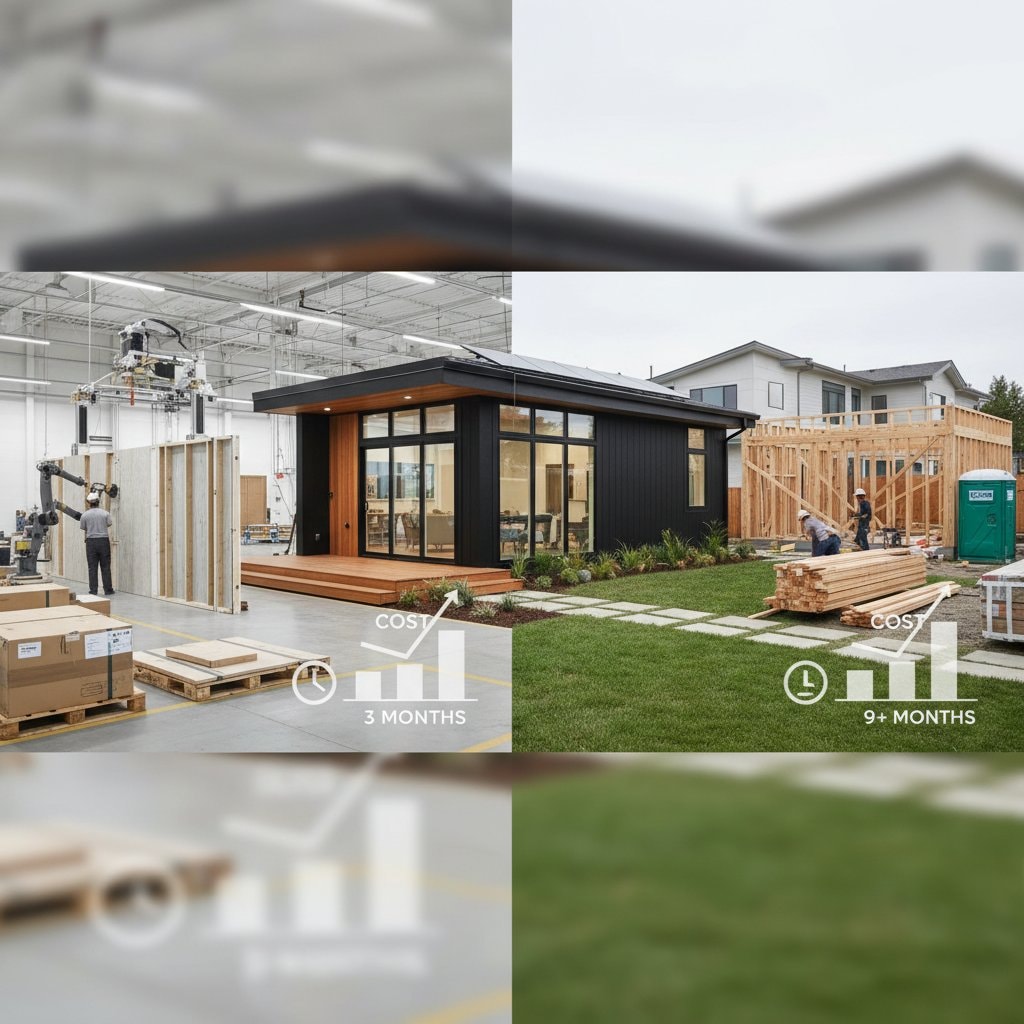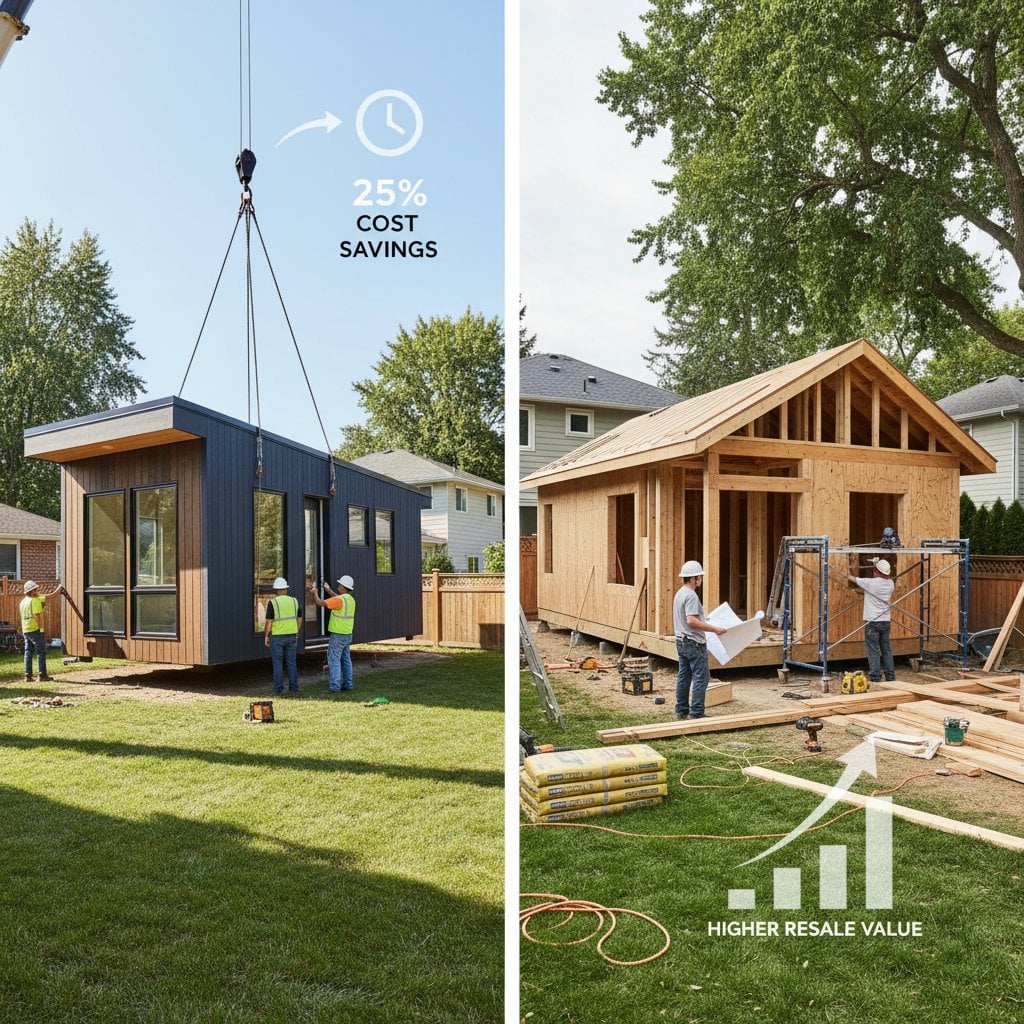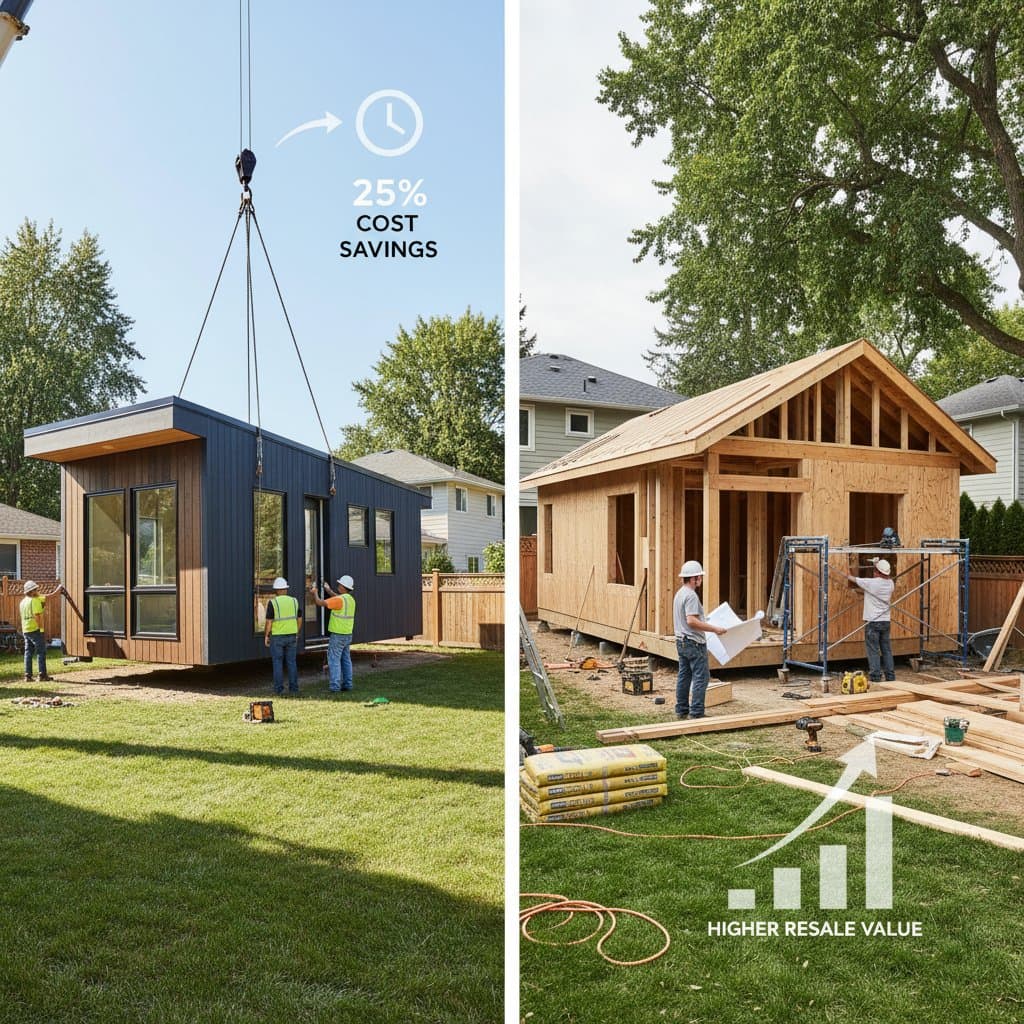Why Prefab ADUs Cost Half as Much as Traditional Builds in 2025
Quick Overview
Prefab accessory dwelling units, known as ADUs, serve as secondary living spaces constructed off-site and then assembled on your property. These units achieve significant cost savings over traditional construction through standardized designs, efficient factory production, and minimized on-site labor. Expect to pay $150 to $350 per square foot for a prefab ADU, compared to over $400 per square foot for site-built options. Installation typically wraps up in eight to twelve weeks. Key considerations include preparing the site, connecting utilities, and navigating permits, often requiring input from licensed experts.
Step-by-Step Guide to Building a Prefab ADU
1. Evaluate Site Readiness
Begin by assessing the available space on your property. Ensure sufficient area for the unit's footprint and pathways for delivery equipment.
- Inspect for soil stability, drainage patterns, and proximity to existing utilities.
- Steer clear of zones with extensive tree roots or shifting ground.
Completion indicator: The site achieves level grading within two inches of variation.
2. Review Local Building Rules
Consult your local building department or municipal website to access ADU zoning details.
- Determine limits on size, height, and placement.
- Inquire about expedited permitting for prefabricated structures.
Completion indicator: Obtain official documentation confirming your property qualifies for an ADU.
3. Select the Right Prefab Unit
Identify a model that aligns with your space constraints and financial plan. Options span 250 to 1,000 square feet.
- Evaluate based on insulation ratings, manufacturer warranties, and material durability.
- Request a detailed quote covering transportation, setup, and any add-ons.
Completion indicator: Secure a contract specifying delivery dates and installation timelines.
4. Build the Foundation
Most prefab ADUs rest on concrete slabs, pier foundations, or crawl spaces.
Caution: Structural foundations demand compliance with engineering standards; engage a certified contractor unless you possess relevant expertise in excavation and pouring.
- Clear and compact the ground thoroughly.
- Add drainage systems where soil conditions warrant.
Completion indicator: The foundation clears inspection and aligns precisely with factory specifications.
5. Set Up Utility Infrastructure
Map out paths for water, sewage, electricity, and gas lines prior to unit arrival.
Safety Alert: Licensed electricians and plumbers must handle all connections to avoid hazards.
- Adhere to code requirements for burial depths and conduit sizes.
- Position protective sleeves and rough-ins in advance.
Completion indicator: Inspectors approve the preliminary utility work.
6. Manage Delivery and Installation
Units ship in modular sections for efficient transport.
- Clear routes for heavy vehicles and lifting gear.
- Oversee positioning to secure the unit against foundation anchors.
Completion indicator: The structure locks firmly in place with all bolts torqued to spec.
7. Integrate Utilities and Weatherproof
After placement, attach verified utility lines.
- Apply durable sealants to exterior seams.
- Verify functionality of plumbing and electrical under professional oversight.
Completion indicator: All systems operate without leaks, pressure issues, or electrical faults.
8. Complete Finishing Touches
Address any on-site details like trim installation, painting, or flooring adjustments.
- Test doors and windows for proper alignment and function.
- Integrate surrounding elements such as walkways or plantings.
Completion indicator: The unit passes final code inspections.
Troubleshooting and Quality Assurance
Frequent Challenges
- Foundation Imbalance: Results in structural stress or binding doors; measure levels repeatedly and use shims for corrections.
- Drainage Shortfalls: Promotes moisture buildup; ensure a five percent slope directs water away from the base.
- Utility Malfunctions: Signs include moisture or power inconsistencies; isolate systems promptly and summon qualified technicians.
Practical Solutions
- Seam Imperfections: Apply elastomeric sealants for lasting protection.
- Hardware Instability: Secure with appropriate fasteners or swap components.
- Binding Openings: Realign frames or apply lubricant to mechanisms.
Key Reasons Prefab ADUs Reduce Expenses
Factory-Controlled Production
Construction occurs in controlled indoor environments, minimizing material waste and exposure to elements. Specialized teams handle assembly lines, boosting productivity and trimming payroll. Precision tools limit errors, avoiding costly revisions.
Accelerated Timelines
On-site traditional methods involve sequential stages vulnerable to weather or supply interruptions. Prefab modules arrive pre-assembled, often halving overall duration. Quicker projects lower interest on loans and restore your yard sooner.
Streamlined Designs and Procurement
Bulk sourcing stabilizes costs, while uniform blueprints cut engineering fees. Personalization focuses on aesthetics rather than altering load-bearing elements, preserving affordability.
Reduced Workforce and Oversight Expenses
Traditional projects coordinate diverse specialists sequentially. Factory integration streamlines trades, and pre-shipment inspections cut field reviews and holdups.
Optimized Resource Allocation
Automated machinery minimizes scraps, with many firms reusing remnants across builds. This contrasts with on-site practices that generate higher disposal fees.
Reliable Financial Planning
Contracts lock in totals for components and logistics, shielding against surprises. Unlike variable site builds, prefab predictability curbs overruns from discoveries or modifications.
Cost Breakdown: Prefab Versus Traditional ADUs
| Category | Prefab ADU Estimate | Traditional ADU Estimate |
|---|---|---|
| Design and Permits | $5,000 - $15,000 | $10,000 - $25,000 |
| Site Preparation | $10,000 - $25,000 | $15,000 - $35,000 |
| Core Structure | $80,000 - $180,000 | $120,000 - $250,000 |
| Labor | Included in unit price | $40,000 - $80,000 |
| Overall Total | $100,000 - $250,000 | $180,000 - $400,000 |
Savings range from 25 to 40 percent, influenced by regional wages, terrain challenges, and feature selections.
Strategies for Optimal Results
- Partner with certified modular producers to ensure regulatory alignment.
- Book inspections at project outset to prevent bottlenecks.
- Allocate a 10 percent buffer for unforeseen site or connection needs.
- Maintain records of all interactions with builders and authorities.
- Finalize utility designs before committing to foundation plans.
Common Questions
Do prefab ADUs comply with codes? Certified units adhere to regional and national standards from the outset.
How much customization is possible? Select from approved palettes for interiors, appliances, and floor plans.
Is a foundation always required? Structural support via slabs or piers is essential, vetted by professionals.
How to handle sloped terrain? Employ specialists for regrading or adaptive basing.
Does an ADU boost resale value? Added square footage and income potential typically enhance market appeal.
Sustaining Your Prefab ADU
These units provide versatile accommodations and enduring equity. Adhere to routine upkeep and log interventions to avert escalation. Monitor regulatory shifts in efficiency or usage to stay compliant.











